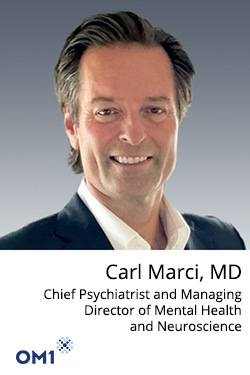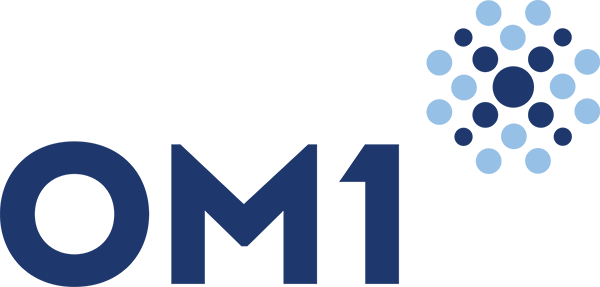Real-World Data for Mental Health – Understanding Outcomes and Unlocking Pathways to More Precise Treatments
June 10, 2022
OM1 was founded by a team dedicated to the belief that participating in value-based healthcare requires a much more complete view of patient outcomes than what has been available until now. With that principle in mind, OM1 has built the largest electronically-connected mental health specialty network in the United States that is rich with longitudinal clinical data for more than 3 million patients from 2,500 specialty practices representing all 50 states across a range of conditions such as depression, schizophrenia, bipolar disorders, and post-traumatic stress disorder.

Let’s begin with defining RWD, RWE, and current trends that are happening now to increase the importance around this type of information in healthcare overall.
RWD are the data relating to patient health status and/or healthcare delivery that are routinely collected from a variety of sources, whereas RWE is the clinical evidence regarding the usage and potential benefits or risks of a medical product that is derived from the use of RWD. There are a number of current trends that make this data possible and very appealing. The first trend is the availability of data via electronic health records (EHRs). Today, almost everyone has their health information recorded by their clinicians into an electronic data source. We are taking that information, pulling it into the cloud, and organizing it for use. The second trend is the rise of big data, and with that comes data science and artificial intelligence (AI) methodologies to mine it for unique insights. The third trend is the 21st Century Cures Act, which the government passed to incentivize the Food and Drug Administration and life science companies to move toward using RWD/RWE and stop relying exclusively on randomized control trials. Finally, and potentially most importantly, is the growth of personalization and consumerism.
“We’ve all gotten used to information being customized towards us and our unique needs. Why should our healthcare data be any different? But it all starts with great data.“
What do you mean by “great data”?
The key to great data is the EHR. Having structured and unstructured clinical notes from specialists is a big differentiator from sources and suppliers that focus exclusively on insurance and pharmacy claims, but you need those as well. At OM1, we have deterministically linked data from EHRs as well as pharmacy and insurance claims with mortality data from the government, lab data from primary care sources, and social determinants of health (SDOH) data including household income, education, and race.
“By acquiring quality data that is relevant, combined with our ability to process that data to research and regulatory grades, we can use it with our partners for insights and impact that are really important.”
What is leading to the focus on mental health and with that new focus where are we seeing gaps?
“We’re all familiar with the COVID pandemic, and we’re increasingly familiar with the second pandemic, and that’s the one related to mental health.”
Today, mental health outranks cancer and heart disease in unmet need and annual healthcare spending. Issues related to mental health also outrank both cancer and heart disease with respect to poor access to effective treatments, social stigma, and limited insurance coverage. As a comorbid condition, depression and other mental health problems significantly drive up costs and complicate the treatment of other chronic physical health ailments, all of which were exacerbated by the pandemic. One in two Americans are now reporting depression symptoms, and spending has reached $225 billion in recent years.
High quality research insights are needed to enable market adoption, broaden payer coverage, and drive towards personalized care. These are lacking or have been difficult to attain to date. At the same time, awareness is growing related to the high costs, slow speed, and limited utility of randomized controlled trials as the sole basis for developing treatment guidelines. We need a better way.
What part can RWD play to advance treatments?
When linked together in a standardized and cloud-based architecture, RWD can be accessed to provide insights into gaps in care and offer a powerful aid to help tackle the many challenges in research, treatment, and care delivery for the millions of Americans that suffer from mental illness. SDOH data are also RWD and are increasingly growing in importance for our understanding of racial and other disparities in health utilization and outcomes. RWD can also inform treatment effects beyond clinical trials, helping to accelerate drug approval processes, inform safety and effectiveness of medications on a more diverse population over a longer period of time, and provide information to payers on medication effectiveness.
What is OM1 doing for the mental health space?
Our Mental Health Network includes the addition of more than 3 million patients with mental health disorders followed longitudinally by more than 9,000 specialists in over 2,000 clinics across all 50 states. This network includes deep clinical data with specialist notes, medication lists, SDOH data, insurance and pharmacy claims, and patient-reported outcomes such as the PHQ9 for depression and the GAD-7 for anxiety.
“Multiple conditions are already part of this focus and additional conditions are being added every month.”
Can you describe / discuss any use cases?
There are several use cases that I can think of, and we work with our partners in a variety of ways. For example, we are working with partners on AI and machine learning models for treatment-resistant depression, we’re looking at weight gain and metabolic syndromes associated with second-generation antipsychotics for schizophrenia, and we’re looking at the role of SDOH in accessing mental health treatments. Another area of interest is looking at depression as a comorbid condition.
“As mentioned previously, depression makes all other physical illnesses worse, whether that’s rheumatoid arthritis, psoriasis, heart failure, or others, and we have the data to help our partners understand it.”
To conclude this interview, Dr. Marci stresses that OM1 can partner with you to use RWD and RWE to bring new treatments to market faster, more cost effectively, and more efficiently than ever before.
Click here to learn more, or call 888-324-3899 to set up a meeting with Dr. Marci.







